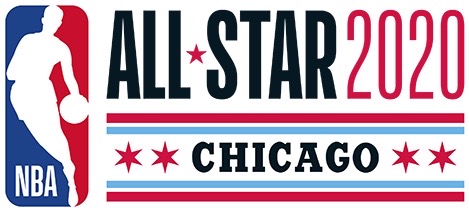NBA’s new All-Star Game format adds competitiveness, effort it’s recently been lacking

This year’s NBA All-Star Game was hosted in Chicago and is the second year it’s adopted a captain drafting format. The format is proving to be working out as it’s brought increased fan engagement and ratings.
In recent years, the various All-Star games in professional sports have turned into a money grab for the leagues and a vacation for the players involved. The accolade that comes with being considered an “all-star” player is still welcomed, but the games themselves have felt like throwaway spectacles rather than actual contests.
While football and baseball have struggled to add interest to their All-Star games, the folks over at the NBA might be onto something with their recent format changes. After successfully adopting a team captain system in 2018, where the top vote-getters from each conference were allowed to draft their teams, the NBA went a step further and completely modified the format of the game for 2020 for captains LeBron James and Giannis Antetokounmpo.
The NBA knew they needed to do something special to commemorate the untimely death of one of the greatest players to ever do it, Kobe Bryant. Along with renaming the All-Star Game MVP trophy after Bryant, both teams wore jerseys meant to honor Kobe and his daughter Gianna, with every member of Team LeBron wearing No. 2 for Gigi and every member of Team Giannis wearing No. 24 for Kobe.
Instead of the traditional four timed quarters, you typically see in an NBA game, the 2020 All-Star Game featured three traditionally timed periods followed by a fourth untimed period. In the conclusion of the first three periods, the score was reset and the team with the lead would “win” the period, which would send $100,000 to the charity of their choice. Team LeBron and Team Giannis each won a period apiece, and tied the third. The magic came in the fourth period, however, as a truly different rule set was applied to decide the winner.
The 2020 NBA All-Star Game used a modified version of the “Elam Ending,” a style of play popularized by the annual charity basketball tournament simply known as “The Basketball Tournament.” In an Elam Ending, a target score is calculated based on the leading team’s score at the start of the final period, and the first team to reach that score wins. The playstyle encourages stronger defense and a lot less of the fouling that plagues the end of games.
For the All-Star Game, the target score was calculated by adding up the cumulative scores of the first three quarters and adding 24 points to the leading team’s score, in honor of Bryant. Fans were treated to one of the most exciting finishes in All-Star Game history, with Team LeBron mounting a comeback to win with a score of 157-155, and LA Clippers forward Kawhi Leonard being awarded the first-ever NBA All-Star Game Kobe Bryant MVP award for his 30-point performance.
The final period of the 2020 All-Star Game featured some of the best defensive performances in a very long time, not just compared to other All-Star games, but to any NBA game. While we are probably a long way from something like the Elam Ending being adopted into the league as a whole, its debut was definitely memorable and will stick around in the All-Star Game for the foreseeable future.






